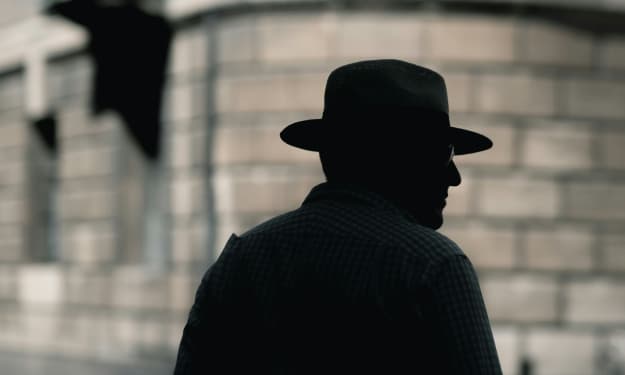
The darkened streets of Hamburg's red-light district bore witness to a reign of terror orchestrated by Fritz Honka, a German serial killer whose grisly acts unfolded between 1970 and 1975. This article delves into the chilling details of Honka's crimes, his methodical dismemberment of victims, the alarming oversights by authorities, and the circumstances leading to his capture, trial, and eventual incarceration in a psychiatric hospital. The sinister narrative of Fritz Honka serves as a haunting reminder of the horrors that can lurk within the shadows of seemingly ordinary lives.
In the heart of Hamburg's red-light district, Fritz Honka embarked on a macabre killing spree that spanned five years, leaving a trail of horror in his wake. His victims, a minimum of four women, fell prey to his gruesome methods of dismemberment, their remains concealed within the confines of his apartment. The red-light district, typically a place of transient lives and clandestine encounters, became an unwitting stage for Honka's nightmarish acts.
Fritz Honka's modus operandi reflected a chilling precision. After claiming the lives of his victims, he would embark on the gruesome task of dismemberment. The red-light district's walls became silent witnesses to the unspeakable acts unfolding behind closed doors. Honka, driven by an unimaginable darkness, concealed the remains within the confines of his apartment—a macabre chamber that held the secrets of his heinous deeds.
As Fritz Honka's apartment turned into a silent graveyard, an ominous stench permeated the air, signaling the atrocities within. Fellow residents of the building, disturbed by the foul odor, lodged complaints with the authorities. Astonishingly, these early warnings were overlooked, allowing Honka to continue his reign of terror unabated. The cries for intervention fell on deaf ears, and the true extent of the horrors within Honka's lair remained hidden.
Fate took an unexpected turn for Fritz Honka when a fire broke out in his building, drawing the attention of firefighters. Responding to the emergency, these unsuspecting heroes stumbled upon a nightmarish scene—an apartment concealing the remains of Honka's victims. The grotesque revelation shocked the firefighting team and unraveled the sinister secrets that had eluded authorities for far too long.
With the discovery of the macabre scene, Fritz Honka's dark secret could no longer be contained. In custody, he confessed to the gruesome murders that had terrorized Hamburg's red-light district. His chilling admission revealed a motive rooted in a twisted form of retribution—the victims, according to Honka, had ridiculed his preference for oral sex over "straight" intercourse. The confession unraveled the disturbed psyche behind the crimes, exposing the depths of his malevolence.
Fritz Honka's day of reckoning arrived as he faced the judicial system for the horrors he had wrought upon his victims. The court, confronted with the details of the dismemberments and the psychological motivations behind the crimes, convicted Honka of one count of murder and three counts of manslaughter. The legal proceedings aimed to provide justice for the lives extinguished by his hands and to hold him accountable for the unspeakable acts that had transpired within the walls of his apartment.
As the court deliberated on Fritz Honka's fate, his habitual alcohol abuse emerged as a mitigating factor. The impact of prolonged alcoholism on his mental capacity became a focal point in the sentencing considerations. Honka's defense argued that his impaired mental state should be taken into account, shedding light on the intricate interplay between substance abuse, mental health, and the commission of heinous crimes.
In a controversial turn of events, Fritz Honka received a 15-year sentence in a psychiatric hospital. The decision sparked debates about the adequacy of the legal system in addressing crimes of such magnitude. The intersection of mental health, substance abuse, and the nature of the crimes committed presented a complex puzzle for justice to unravel, leaving both legal experts and the public grappling with the implications of Honka's sentence.
The conclusion of Fritz Honka's trial left a trail of unanswered questions in its wake. The overlooked warnings, the chilling confessions, and the controversial sentencing raised concerns about the adequacy of the legal system in addressing crimes of such magnitude. The haunting specter of Honka's actions lingered over Hamburg's red-light district, leaving a community scarred by the horrors that had transpired within its midst.
The tale of Fritz Honka, the German serial killer who terrorized Hamburg's red-light district, stands as a stark reminder of the potential for horror that lurks within the shadows of ordinary lives. From the overlooked warnings to the chilling confessions and the controversial sentencing, Honka's story unveils the complexities of justice when confronted with crimes of such grotesque nature. His dark legacy serves as a haunting chapter in the annals of true crime, prompting reflection on the mechanisms in place to prevent, apprehend, and prosecute those who perpetrate unspeakable acts upon the vulnerable.






Comments
There are no comments for this story
Be the first to respond and start the conversation.